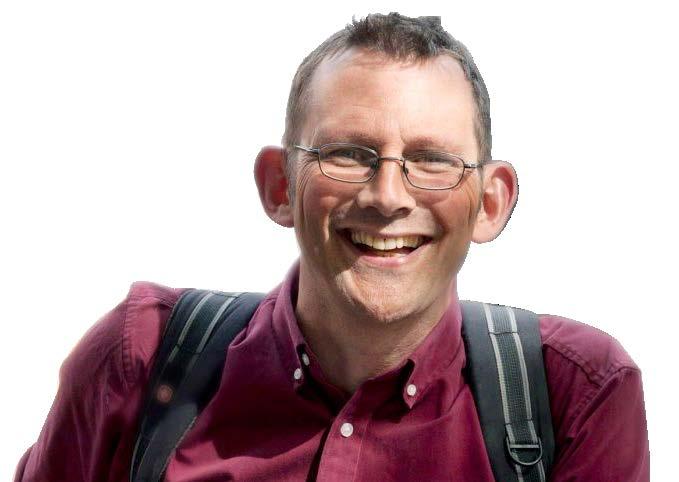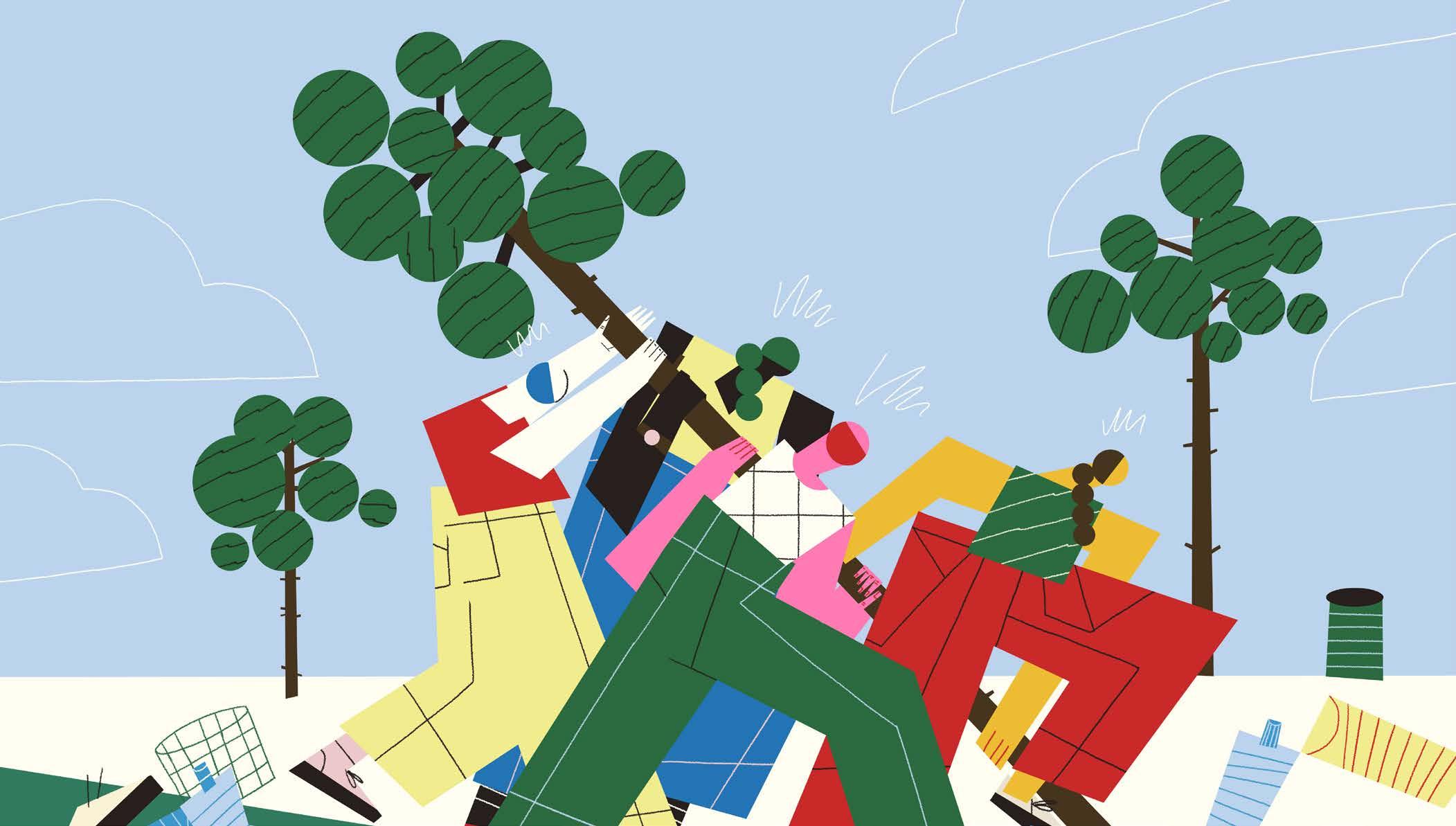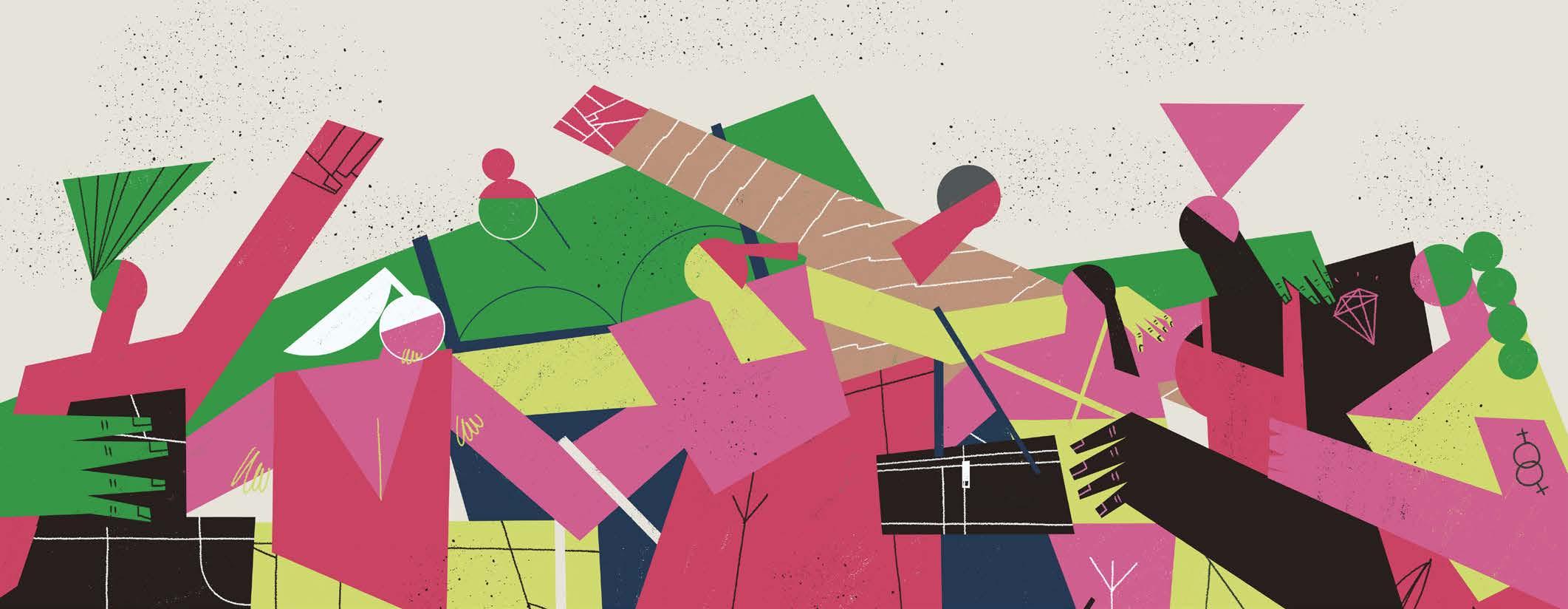
7 minute read
Using your imagination could help save the planet
WORDS ELLIE STROHM
Earlier this year, the Rural Youth Project spoke
to writer and environmental activist, Rob Hopkins who told us about his experiences as co-founder of the, now worldwide, Transition movement. He explained what he had learned through writing his latest book, From What Is to What If? which has been described as, “a call to action to reclaim and unleash our collective imagination”.
There is no avoiding it, we are living in a time of great challenge. We are facing an ecological and climate emergency; vast bio-diversity loss; food insecurity; a social justice calamity; continued racial, sexual, and gender-based discrimination; economic inequality; a housing crisis; and a pandemic that has gravely emphasised these issues. Tragically, it is young people – both urban and rural – who are bearing the heavy burden of these challenges.
At the Rural Youth Project, we have heard young people describe how overwhelmed they feel. Many talk of feeling numb, fearful for their futures, and unable to change their stories or that of their community.
In such a time of crisis ‘imagination’ may seem frivolous. The capacity to create, evolve, and conjure images and ideas for scenarios that do not yet exist, seems an unlikely result under such pressure. Indeed, Hopkins recognises that imagination is, tragically, often a privilege reserved for those who can already meet their most basic needs. However, he argues that limitations, “offer our imagination a structure, a space in which to thrive”.
“One of the most beautiful things about imagination is that the more limits you put around it, the more imaginative you can be,” he continues.
We only have to look at responses to the covid lockdowns to see this in action. People were creative and communities came together to look after each other, people did not wait to be told to help or what to do, they came up with solutions themselves.
- Rob Hopkins Founder of the Transistion Movement

DEVELOPING OUR IMAGINATIONS
Rob is far from alone in his view that developing our imaginations is a crucial factor for us to be able to fully explore and create new opportunities and solutions to the challenges we face.
Science has shown that imagination stimulates brain function and activity. It literally expands the mind as it encourages connections between numerous areas of the brain. It allows us to explore beyond the constraints of our environment and our reality, into a world of dreams, where creativity and invention are at their strongest.
And he says that it is only “with welldeveloped imaginations that we have a chance of emerging positively from the mess we are in”. Indeed, we must ask, how can we get to the future we want to see – if we cannot first imagine it? As poet Rilke said, “The future must enter into you a long time before it happens.”
Rob Hopkins’s conviction is not born from a hopeful theory, but from the numerous examples he has come across on his journey with the Transition Network, and from the two years he spent researching and writing From What is to What if? where he visited hundreds of projects and communities around the world that are making imaginative change happen for themselves. TRANSITION NETWORK
In its own words, the Transition Network is, ‘a movement of communities coming together to reimagine and rebuild our world’. It is about local communities joining forces to crowd source solutions to tackle the big challenges and taking action in their immediate environment that collectively, has a big impact.’ This movement has now spread to over 50 countries, through thousands of groups in towns, villages, cities, universities, and schools.
It all began with Rob and some friends in their local pub in his hometown, Totnes. Originally just an experiment, it was their response to questions such as: ‘What if the change we need to see in response to the biggest challenges of our time came not from governments and business but from you and me; from communities working together? What if the answers were not to be found in bleak solitude of survivalism and isolation and the tweaking of restless commercialism, or in the dream that some electable saviour will come riding to our rescue, but rather in reconnection to community?”
As they put it, 'If we wait for governments, it will be too late. If we act as individuals, it will be too little. But if we act as communities, it might just be enough, and it might just be in time.’
Transition communities come together to learn about the truth of all the challenges we face as a species. As Rob says, “it always starts with understanding the truth of the situation”. Then, he says, comes the question – “does it have to be as bad as that? Surely it could be better than that?!” From there they create a ‘What if?’ space – the imagination space. This is the ‘re-imagining’ part of the Transition Network’s mission – where all ideas are on the table, explored and taken seriously, no matter how bizarre.
Importantly though, this is not just about dreaming. The re-building part of the Transition mission is about getting out there and doing something to create tangible change in your community. It is about meeting up with shovels tomorrow to plant 500 trees around the village or starting a crowdfunding campaign to fund the community wind turbine or creating a local currency to encourage local pounds to be spent with local people thus making the local economy more resilient.
In practice, Transition Networks look like communities reclaiming the economy, sparking entrepreneurship, reimagining work, reskilling themselves and weaving webs of connection and support across the globe.
Participants have described being involved with Transition Network as, “engaged optimism” or “hope with your sleeves rolled up.”
Tread ISSUE 2 GETTING OUT AND DOING KIDNAPPED ATTENTION
On an individual level Rob reflects that; “getting out and doing something changes your perception of your powerlessness.”
Whether in Paris, Totnes, Forres or Humboldt County, California, initiatives are being launched to encourage us to leave behind the “Yeah buts” and move towards asking, “What if?”, “Why not?!”, to “How?” and “When?”. The Transition movement and the rate at which it has spread is a perfect example of how small-scale creativity and action, can have a big impact and create big cultural shifts, fast.
But it is clear that the scale of the challenge we face, requires bigger shifts still, and from a far greater number of us.
In From What Is to What If?, Rob asks, “why are we so incapable of coming together to create, sustain and carry out a vision in which we capably address global crisis and enjoy our lives more in the process?”
According to Rob, “change comes from a deep longing”. He believes that we have lost the longing because we have lost the ability to imagine anything beyond the gloomy proposals we are presented with daily. Many of us have lost our fight and opted for passive acceptance of a dark fate instead.
We are experiencing an imagination crisis, he says. “It seems like we are becoming less imaginative at the very time in history where we need to be at our most imaginative. Our imagination should be taught and well exercised, instead it is flaccid and untoned.”
Rob cites the main reasons for our “flaccid” and “untoned” imaginations as, the rise of technology use, the rise in school examinations, and the absence of play and storytelling in our everyday lives.
On phones, Rob says; “Our attention is being kidnapped by these things we carry around in our pockets – very, very addictive devices that we are evolutionarily programmed not to resist, which are forever screaming at us and shouting at us to get our attention.”
Needless to say, we are losing out. Where our attention goes, our time and energy follow – and these are finite. What opportunities and ideas are we losing in the endless hours spent trying to get to the bottom of our social media feeds?
Worryingly, Rob recalls that the CEO of Facebook recently named their main competitor as sleep.
“We urgently have to reinvent our relationship to these things. How many brilliant ideas that could have saved the planet from the climate and ecological emergency have been lost, just because Facebook won in the battle for our attention?”
Are we aware of what we are filling our heads with? What are we really consuming on a daily basis? Are we filling our brains with inspiring creative optimistic content? Is this translating into our own lives? Or perhaps are we facilitating out own defeat by mindlessly absorbing the colossal negativity at our fingertips each day?
Imagination is creativity in action. It can be using our brain and our senses to create an image within our mind. Imagination draws on our experiences and knowledge of the world around us and combines this with the complete unknown to make something new.
Rob explains, that if we do not feed our minds with great memories, thoughts, and knowledge – we are unlikely to be able to imagine great things.
So, how can we reclaim our imaginations and unleash our individual and collective potential?
Rob freely accepts that we are not likely to all be throwing our phones away any time soon. But the key is to dedicate time and space to explore our imaginations. Whether it is a company, community group, school or family, play is important as is storytelling. “Storytelling hits us on a deeper level, sustains our concentration and by shutting off the visual swiping we can listen and let our minds form their own pictures,” Rob says.
Rob Hopkins views are not without precedent. Albert Einstein said that imagination is more important than knowledge: “Knowledge is limited, imagination encircles the world.” www.rophopkins.net @robhopkins5085
Check out Rob’s fantastic book ‘From What is to What If’ available from all good bookshops. Rob also has a podcast ‘From What If to What Next?’ available from most podcasting services.











